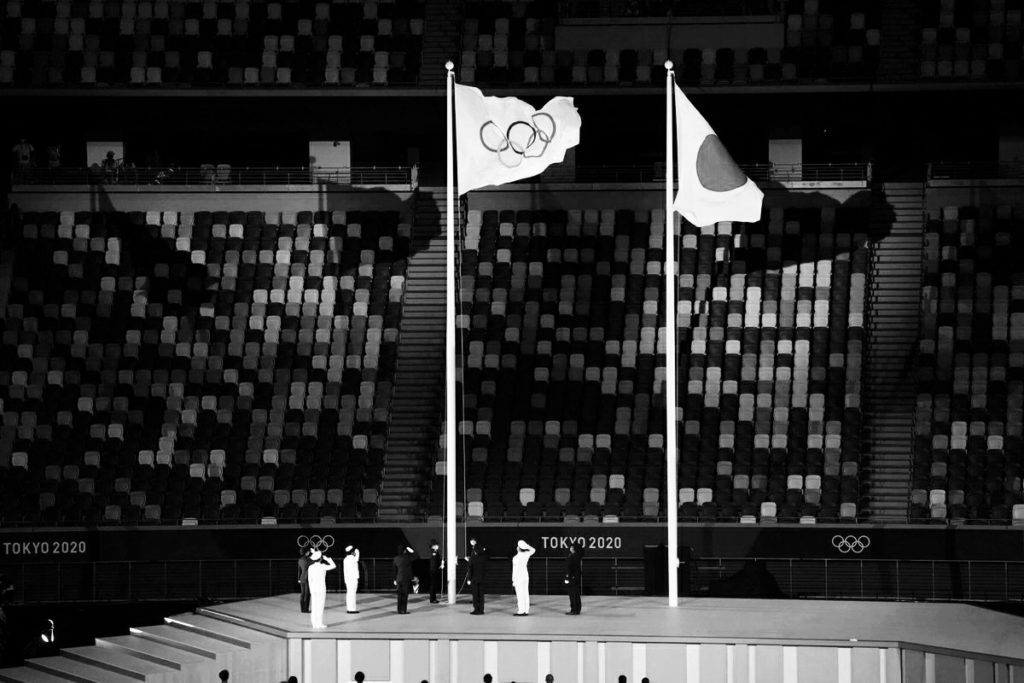BRUSSELS BEHIND THE SCENES
Weekly analysis and untold stories
With SAMUEL STOLTON
Other Brussels behind the scenes stories:
Conversion therapy still exists in Europe
Barnier's last throw of the dice
Why Macron is banking on the Conference on the Future of Europe
Why does the EU Olympic flag proposal matter?
Until its 1992 dissolution, Bojan Tokič’s nation of birth, the Socialist Federal Republic of Yugoslavia (SFRY), displayed a flag at consecutive Olympic opening ceremonies that bore the traces of a country with very different values to the one he represents today.
The SFRY’s flag featured the Pan-Slavic triband of blue, white and red, along with a gold-bordered red star - an homage to the Communist Anti-Fascist Yugoslav Partisans, who under Marshal Tito, had been formidable resistance against the Axis powers during the Second World War.
BRUSSELS BEHIND THE SCENES is a weekly newsletter which brings the untold stories about the characters driving the policies affecting our lives. Analysis not found anywhere else, The Brussels Times' Samuel Stolton helps you make sense of what is happening in Brussels. If you want to receive Brussels behind the scenes straight to your inbox every week, subscribe to the newsletter here.
On Friday, Table tennis athlete Tokič walked out alongside compatriot and Olympian canoeist Eva Terčelj, the flag of Slovenia raised above their heads. The bright colours intermingled with those of competing nations, flushing the Tokyo night with a kaleidoscopic spasm of colour.
Earlier this week, there had been calls in Brussels and Ljubljana for Tokič and Terčelj to also bear the flag of the European Union as part of the march, due to Slovenia’s current chairing of the Presidency of the EU Council.
Commission Vice-President for Promoting a European Way of Life Margaritis Schinas and Slovenian Prime Minister Janez Janša had written to President of the International Olympic Committee (IOC) Thomas Bach, saying that the move would “render Slovenian athletes ambassadors for European unity and the values underpinning our union which match those of the Olympic movement,” - certain values fostered by Slovenia’s transition from a one-party communist republic as part of the SFRY to a Parliamentary republic, eventually paving the way for its 2004 EU accession.
But Schinas and Janša’s request was refused by the IOC. An Olympic team “can only use one flag, one emblem and one anthem,” a spokesman said. “For obvious reasons, there are no exceptions allowed, as the IOC would then face numerous requests from numerous institutions who like the European Union, share the values which are at the core of the Olympic Games.”
The EU has long attempted to harmonize its disparate representation at the Olympics. Former Commission President Romano Prodi previously called for the EU’s blue and yellow-starred flag to feature at the Beijing 2008 opening ceremony, and many medal-winning athletes of yesteryear have also taken various opportunities to brandish EU symbology. At the 2016 Olympics in Rio, Italian fencing medallist Elisa di Francisca did just that, paying respect to recent victims of terrorist attacks on the bloc.
The sanguinity for highlighting a greater EU ‘profile’ at the Olympics can, however, occasionally provoke the ire of observers. Going back to Rio, the Brits weren’t too thrilled when the European Parliament decided to publish its own version of the concluding medal standings, featuring the Chinese in third place, the US in Second, and the EU, profiting from 67 medals won by a UK that had not long voted for Brexit, in first.
In response to the IOC’s refusal to admit the EU flag, Vice-President Commissioner Schinas appeared to be hedging his bets that by the time the Paris Olympics comes around in 2024, the bloc may have a better chance of having its emblem on show.
The optimism isn’t entirely misplaced. Notwithstanding the fact that the 2024 competition will indeed take place on EU soil, the IOC has, since 1998, permitted the official display of flags belonging to other international institutions, such as the United Nations (UN), albeit not at the opening ceremony.
This came after a concerted effort from the UN in 1992 to implore all members to observe the ancient Greek tradition of ‘ekecheiria,’ or the ‘Olympic Truce.’ Historically, this was a commitment to ‘lay down arms’ between rivals during the games, in the interest of peace and fair competition - something that the IOC had recognized as particularly important in a post-Soviet world.
Flags and ideological systems of governance come and go with the vicissitudes of history. This year in Tokyo, the Slovenian paring Tokič and Terčelj did not hold the EU flag high above their heads. Nevertheless, in reality, it is the conduct, performance and character of representatives that provides a more accurate referent to a community’s principles and values, above and beyond any superficial emblem, symbol or flag.
BRUSSELS BEHIND THE SCENES is a weekly newsletter which brings the untold stories about the characters driving the policies affecting our lives. Analysis not found anywhere else, The Brussels Times' Samuel Stolton helps you make sense of what is happening in Brussels. If you want to receive Brussels behind the scenes straight to your inbox every week, subscribe to the newsletter here.

